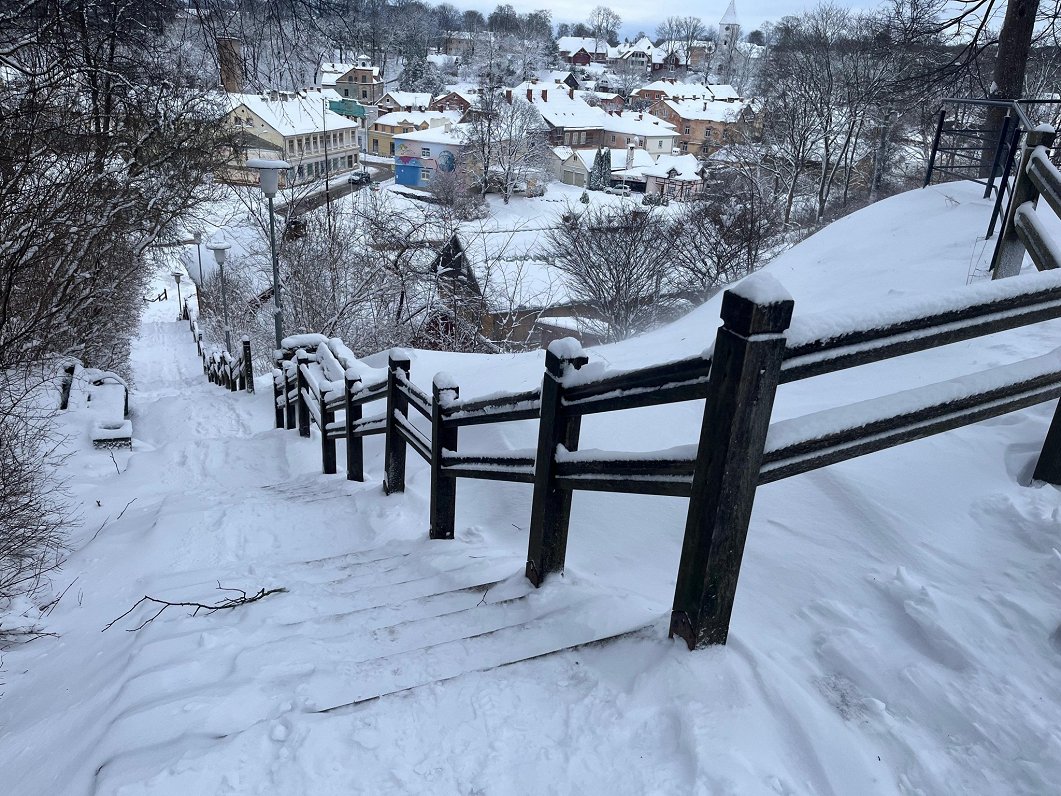Cold waves have several definitions. In Latvia, two are most commonly used.
The first one can be applied not only to winter, but to any season. The rules are that there must be six consecutive days when the minimum daily temperature is below the tenth percentile of the reference period. What does this mean? The reference period in this case is the thirty years from 1961 to 1990. What is the tenth percentile? If we take one particular date, for example March 6, then there have been thirty years in the reference period, each of which has one March 6. If we rank these thirty March 6s in order from coldest to warmest, then ten percent, or three specific March 6s, would be the tenth percentile.
The second definition of cold waves is simpler, but only applies to winter, and is based on the current Latvian Environment, Geology and Meteorology Center warning system criteria. Specifically, a major freeze warning is triggered when the forecast temperature drops to -20 degrees and below. In this case, the cold wave is at least two days with a minimum temperature of -20 degrees.
Whichever of the above is used, the data show that the frequency and severity of cold waves in Latvia are decreasing. The easiest way is to look at the most extreme cases – how often temperatures drop to -30 C. In Rīga, as mentioned, there has not been such a case of frost for 31 years, whereas in the last century, it happened on average once a decade. We can also look at the data from the Zosēni meteorological station, which is known as Latvia’s cold pole. The last time it hit -30 degrees was in 2012, 13 years ago, while, for example, between 1980 and 2000, temperatures that low and even lower were recorded in seven of those 20 years. On average, every third year there was at least a -30 degree frost, but not once in 13 years.
If we look at the more extreme cases of -35 and even -40 degrees in Latvia, there were several such occasions in the last century, but the last time a -40 degree frost was reached was in 1978 – almost half a century ago.
The most severe frost in Latvia this century occurred in early January 2003. On the morning of January 6, the air temperature in Zosēni dropped to almost -38 degrees. It was also the last time in Latvia that the temperature dropped below -35 degrees.
The biggest frost in the history of meteorological observations was recorded on February 8, 1956, when the temperature in Daugavpils reached -43.2 C.
Climate change scenarios developed by the Latvian Environment, Geology, and Meteorology Center predict that cold waves will continue to get warmer. Rīga has already entered a phase where winter lows below -20 degrees are rare. Last winter, the weather station in the city center recorded -20.3 degrees. The capital had not seen such a frost for eight years. It will become even rarer in the future.
Climatologists have analyzed the data since 1947 in particular detail, calculating the average length of cold waves observed across the country. The criterion used in this case was at least two days with minimum temperatures of -20 degrees and below.
In the last century there were several years when cold waves lasted 10-20 days, in this century the average length of a cold wave in Latvia is 1-6 days, and in five years there have been no cold waves.
To answer the question posed in the headline, yes, there will be -30 degree frosts in Latvia, but if it was called just a decent winter day last century, some infrastructure may not be ready for such cold now, as it has not been experienced for a long time. The likelihood of a -30 degree frost in the center of Rīga, however, has become very small, statistically approaching a once-in-a-century event.
Select text and press Ctrl+Enter to send a suggested correction to the editor
Select text and press Report a mistake to send a suggested correction to the editor
Tell us about a mistake
